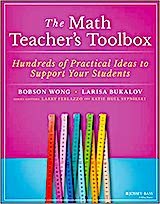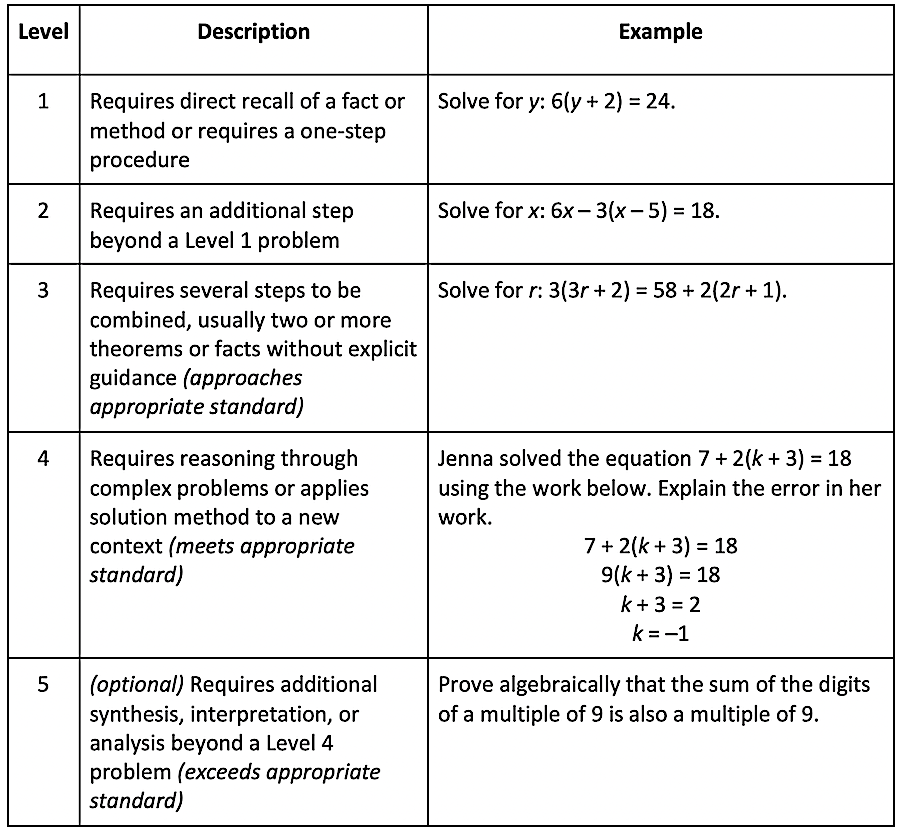Tiered Activities Make Math More Inclusive
MiddleWeb is featuring excerpts from three new books edited by the editorial team of Larry Ferlazzo and Katie Hull Sypnieski, both teachers in Sacramento CA and co-authors of The ELL Teacher’s Toolbox. Here’s our third article, from The Math Teacher’s Toolbox. Also see: Social Studies and Science.
By Bobson Wong and Larisa Bukalov


In our experience, the biggest obstacle to differentiating math instruction is figuring out how to do it effectively on a regular basis. In this article, we discuss one of our favorite differentiation techniques – tiered activities (sometimes called parallel tasks).
In a tiered activity, we divide work into levels by complexity so that students with different levels of understanding on a topic can work simultaneously. We sequence work to move students through their zone of proximal development. The tasks are designed to be accessible enough so that students can use their past knowledge to understand it, but challenging enough so that students can extend their learning.
We typically use four or five levels since our students are used to seeing these scales on the state tests and AP exams that they take. The table below shows a brief description and example of each level.
We fit our tiered lessons into the familiar framework of a whole-group introductory discussion, guided independent practice, and a whole-group summary. Our lessons have Do Now questions that are accessible to students based on their prior knowledge.
The class discussion of the Do Now activity leads into the lesson. Classwork problems range from the easiest questions in Level 1 to the hardest questions in Level 5. The lessons conclude with a summary question that students can answer individually as an exit ticket or with the class in a whole-group discussion.
Our classwork sheets contain all of the problems in the lesson. By providing all levels to everyone, students can monitor themselves, know what they need to do to improve to the next level, and work through the lesson at their own pace. Most of our students follow along with us while we discuss the lesson and do examples. After they become comfortable with the new material, many continue without our guidance, often working with a classmate.
Creating a Tiered Activity
To create a tiered lesson, we use the following steps:
1. Determine the goals and skills for the lesson. We typically take these from our unit plan.
2. Determine the Level 4 problems that are appropriate for those goals. Since Level 4 problems meet the standards for the lesson, we use them as our end goal. We refer to sources such as textbooks, websites, and end-of-year assessment questions to help us.
3. Adjust the Level 4 problems as necessary to match the skills and readiness of our students. Matching the levels to our students’ current skills and readiness is also critical to their social-emotional learning. If the Level 4 problems are too easy for our students, we may label them Level 3 so that students can get challenging work. If the Level 4 problems are too difficult, we may label them Level 5 or put them off into a future lesson to prevent students from getting too discouraged.
4. Identify three or four skills necessary to complete Level 4 problems. These skills help us determine the difficulty of Level 1 (one skill required), Level 2 (two skills required), and Level 3 (three or more skills required) problems.
5. Put an appropriate number of problems for each level. We typically put between two and four questions in each level, depending on the difficulty of the questions and the amount of time we have in class. This usually gives most students enough time and practice to reach Level 3 or 4.
6. If we have students that we believe can complete Level 4 problems and want an additional challenge, we create Level 5 problems. We often use textbooks for advanced courses or questions from math competitions as inspirations for Level 5 questions.
Advantages and Challenges of Tiered Activities
Tiered activities help students to engage in productive struggle, in which they actively work with little guidance on a task that is just beyond their abilities. When students struggle productively, they are not experiencing pointless frustration or practicing something that has just been demonstrated. If students see struggle as a necessary step towards eventual mastery, they are more likely to persist in academic endeavors, which helps promote a growth mindset.
Unfortunately, tiered activities don’t work for every lesson. They tend to work best for topics that require relatively little direct instruction so that students have enough time to work through the levels.
Tiered activities often require a great deal of time and energy to organize. Relying on textbooks and other sources that order questions by increasing difficulty (even if they don’t explicitly group problems by level) can make this task easier.
Despite these challenges, we believe that the many benefits of tiering make the effort worthwhile.





































This is excellent! I remember reading it in the good to have textbook for math teachers, The Math Teacher’s Toolbox, by Wong & Bukalov. Wonderful job by the two authors